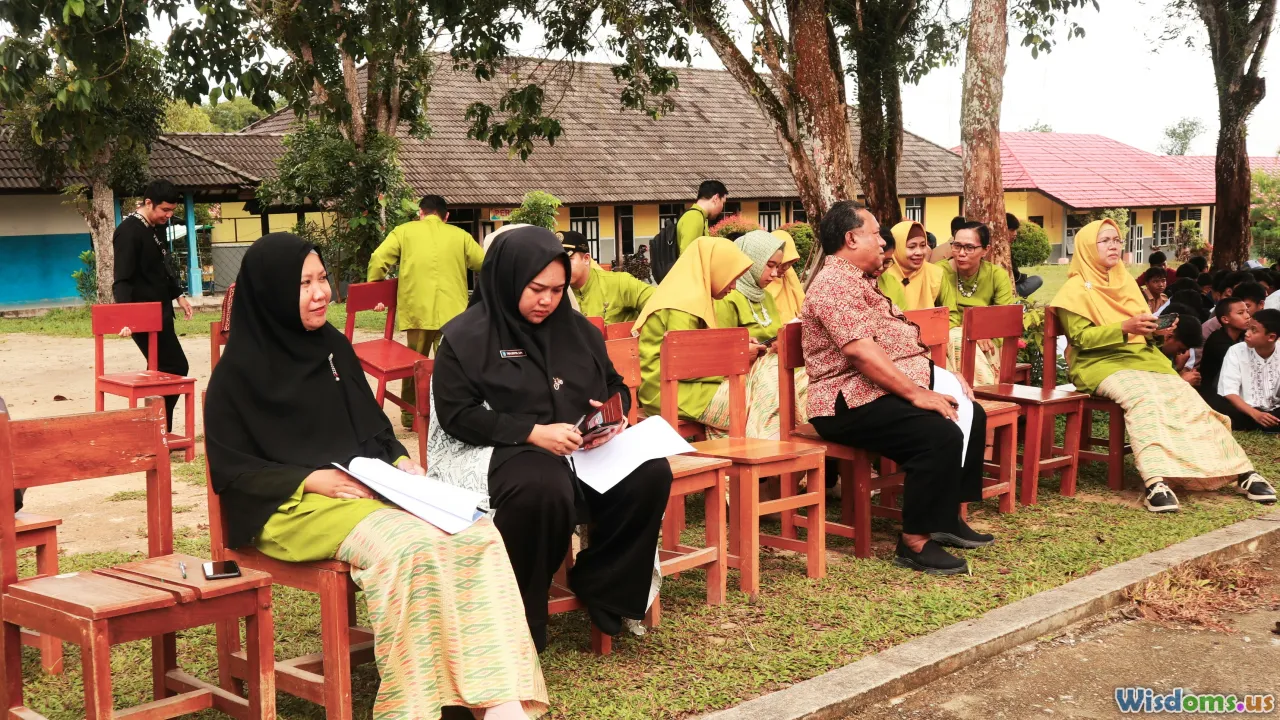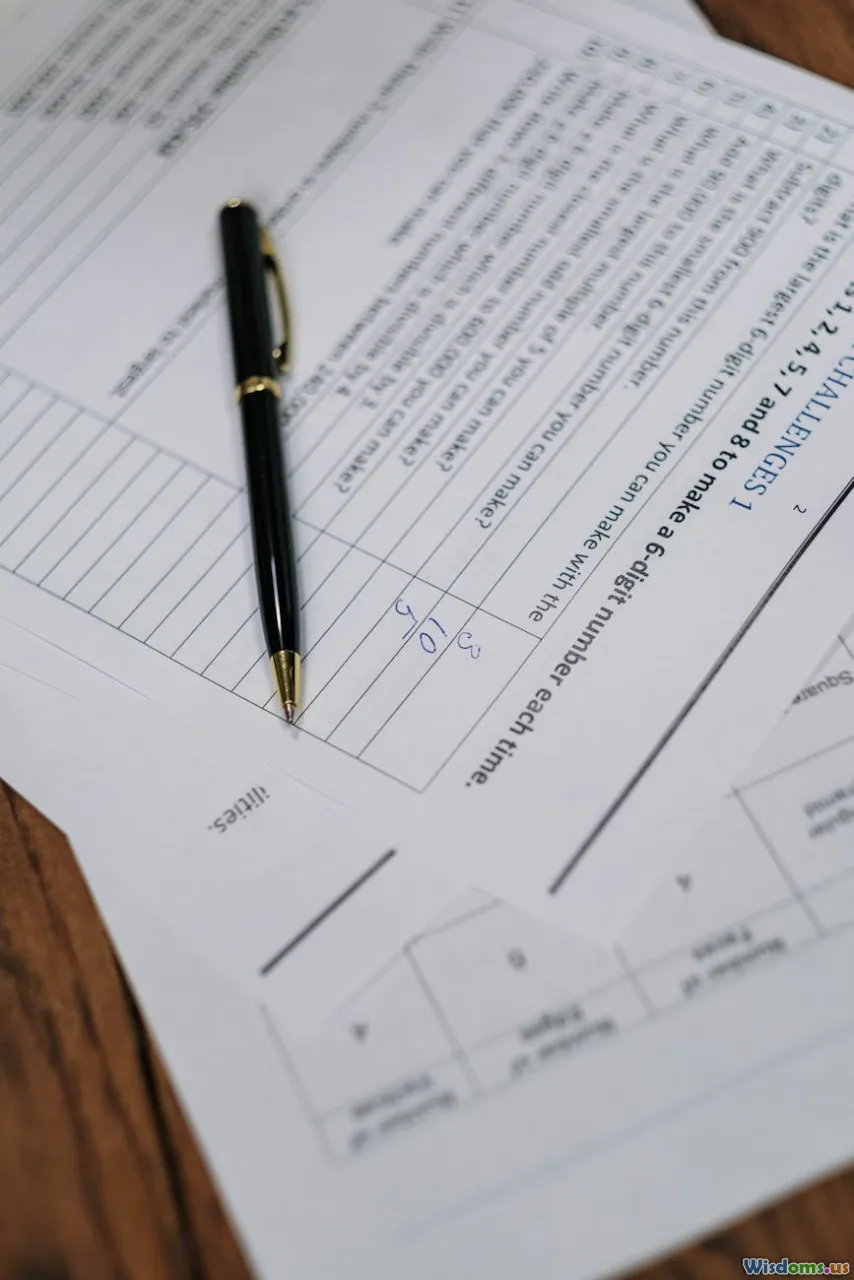
Unlocking Social Mobility Techniques Used in Rural Education Success
15 min read Explore effective techniques advancing social mobility within rural education, fostering academic growth and opportunity. (0 Reviews)
Unlocking Social Mobility: Techniques Used in Rural Education Success
In the tapestry of global development, few threads are as dynamic—or as crucial—as education. Particularly in rural regions, high-quality education stands out as a powerful ladder to improved social mobility, offering children and families opportunities to surpass generational boundaries and strive for brighter futures. But what sets apart rural education systems that deliver real social advancement? Let’s delve into proven techniques, success stories, and practical strategies that transform the landscape of rural learning and unlock pathways to upward mobility.
Community Engagement as the Foundation

One resounding theme in successful rural education initiatives is the active participation of the local community. When parents, elders, and local leaders engage with schools, they help forge a culture that values learning—a vital first step in raising educational aspirations.
Concrete Example: In Rajasthan, India, the Pratham organization has implemented the “Read India” campaign. Local volunteers (“Education Volunteers”) bridge school and community by offering remedial classes and workshops, fostering parental involvement. As a result, reading and arithmetic scores climb, while higher rates of school attendance are noted—outcomes closely linked to future economic advancement.
How-to Approach for Rural Schools:
- Organize regular community-teacher forums to address problems collaboratively.
- Invite successful local alumni as role models.
- Collaborate on education fairs, open days, and local resource drives.
The deeper the partnership between school and society, the greater the likelihood of educational breakthroughs leading directly to social mobility.
Student-Centered Pedagogy: Personalizing Rural Learning

While resource limitations persist in rural regions, effective schools adapt by tailoring instruction to fit the unique needs of each student. This pivot to a student-centered approach—eschewing rote memorization for interactive, relevant learning—significantly boosts engagement and learning outcomes.
Practical Tactics in Action:
- Using multi-grade classrooms, as seen in rural Nepal, where teachers deliver differentiated lessons tailored to varying abilities within a single group.
- Emphasizing project-based learning: In some Ugandan schools, students tackle real-life agricultural or community challenges, building both academic and problem-solving skills.
- Incorporating local culture and languages into the curriculum, a key factor for success in indigenous rural schools in Australia, which fosters belonging and boosts retention.
These strategies not only achieve better literacy and numeracy outcomes, as measured in multiple studies, but they also elevate self-confidence—an essential ingredient in climbing the socioeconomic ladder.
Leveraging Technology for Distance Learning

Technology is no longer just the remit of urban centers. Innovations are quietly revolutionizing rural classrooms in ways that directly support social mobility.
Examples of Impact
- Digital Classrooms in Kenya: BRCK Education provides solar-powered, rugged tablets loaded with the entire Kenyan curriculum, bringing interactive, high-quality lessons to remote villages. Test results consistently show these students outpacing peers in areas without tech access.
- Radio Schools in Latin America: During the COVID-19 pandemic, countries like Peru and Bolivia broadcast lessons on public radio, offering an academic lifeline. By democratizing access, radio teaching ensured rural students could continue their studies—disrupting the cycle of poverty that comes with lost educational time.
Actionable Steps for Implementation:
- Partner with NGOs to secure mobile devices or solar-powered educational aides.
- Use widely available tech: Set up WhatsApp or SMS homework assignments, especially where internet connectivity is low.
- Promote offline digital libraries with content pre-loaded for local community centers.
Through technology, rural schools make the leap from isolation to participation in the digital economy—crucial for social mobility in the modern world.
Teacher Recruitment, Training, and Retention

A school’s most valuable asset is its teachers. In rural settings, securing motivated, well-trained, and persistent educators poses unique challenges. Successful regions prioritize not just recruitment, but constant professional development and recognition.
Case Study: Vietnam’s Innovations Vietnam’s rural schools actively involve local teacher candidates, reducing flight to urban centers. The Ministry of Education organizes village-based training workshops—teachers receive practical strategies (like peer mentoring and blended learning) while being rooted in their community. As a result, UNESCO-rated literacy rates in rural Vietnam outstrip many global peers.
Best Practices:
- Offer career incentives: housing allowances, health care, tuition credits for family members, and awards for innovation.
- Enable peer-to-peer mentorship: Experienced city teachers regularly exchange visits and knowledge with rural colleagues.
- Invest in digital training: Platforms like the Commonwealth of Learning offer free courses on low-income and low-connectivity pedagogy.
Such approaches not only steady the teacher workforce, but embolden rural learners with reliable, quality instruction.
Multi-Sector Partnerships Yielding Breakthrough Results

Education doesn’t work in isolation—especially in the rural world, where poverty, health, and infrastructure issues interlock closely with learning. High-performing rural schools very often benefit from partnerships between government, NGOs, the private sector, and civil society.
Real-World Collaborations:
- In Mali’s Sikasso region, programs like School Health and Nutrition bring in NGOs and local health personnel, providing free breakfasts and basic healthcare at schools. This multidisciplinary approach reduces absenteeism and increases graduation rates—a direct link to heightened life chances.
- In the US, the Rural Schools Partnership aligns business partners with rural districts, leveraging local business networks for internship placements and post-secondary scholarships.
Tips for School Administrators:
- Map community challenges, then reach out to non-traditional partners—health centers, agricultural cooperatives, mobile network providers.
- Share metrics and progress, inviting transparency and further investment.
- Champion cross-sector workshops to brainstorm solutions that address multiple barriers simultaneously.
When educational goals align with shared local priorities and resources, the entire ecosystem works in service of social mobility.
Student Mentoring and Peer Support Networks

Children and adolescents thrive when guided by positive examples—especially peers and slightly older mentors from similar backgrounds. In successful rural schools, mentoring helps bridge the gap between ambition and achievement.
Effective Examples:
- In South Africa, peer-led reading clubs train older students to support younger learners. This not only boosts literacy and numeracy but fosters leadership skills and self-efficacy, setting up both mentors and mentees for future advancement.
- In Appalachian regions of the United States, programs like Upward Bound build support groups that shepherd first-generation college-bound students through applications, scholarships, and adaptation to new academic environments.
Suggestions for Launching Peer Networks:
- Identify and empower willing older students or recent graduates as mentors—offer training but keep it student-led.
- Establish regular meetings, blending academic, personal, and career guidance (e.g., resume building, role-play interviews).
- Celebrate success stories at school assemblies, using them to spark aspiration.
Peer mentoring changes social norms—demonstrating what’s possible, fueling both confidence and concrete paths out of rural disadvantage.
Assuring Access: Overcoming Physical and Financial Barriers

Without basic access to school, even the best curriculum, teachers, and technology fall short. Rural education leaders excel when they devise solutions to transportation, cost, and inclusivity challenges.
Analysis of Smart Solutions:
- Transportation: In Ghana, “School Bus Plus” schemes operate parent-run microbuses on a cost-sharing model, ferrying children safely over long distances. In mountain communities in Peru, the government constructs pedestrian foot bridges and arranges riverboat shuttles.
- Financial Inclusion: Targeted scholarship programs, such as India’s Right to Education Act and Brazil’s Bolsa Família, subsidize uniforms, meals, and supplies—decisive factors for keeping underserved children in class.
- Gender and Disability: Inclusive education plans in Ethiopia offer stipends for disabled students, while separate REST spaces and dignity kits ensure adolescent girls can comfortably remain in school during menstruation.
Actionable Advice:
- Survey families to assess hidden out-of-pocket costs and design direct support mechanisms.
- Forge local transport cooperatives or explore public-private mini-grant options for transit.
- Collaborate with NGOs to expand outreach to remote, disabled, or minority populations.
Clearing these foundational hurdles ensures that no child is left behind—opening doors to long-term social and economic progression.
Fostering Lifelong Learning and Entrepreneurial Skills

Sustainable rural education doesn’t end at high school graduation. Forward-thinking programs integrate lifelong learning and entrepreneurship into rural curricula, empowering students and community members to seize emerging economic opportunities.
Standout Initiatives:
- Africa’s School Entrepreneurs Clubs embed small business and innovation competitions within secondary schools, teaching basic finance, marketing, and digital skills. Participants tend to launch microenterprises or excel in vocational (and later, university) pursuits.
- In rural Canada, adult education evenings at local schools offer digital literacy to parents and out-of-school youth, increasing their marketability for remote-work and online sales positions.
Practical Steps for Schools:
- Add experiential learning opportunities: internships with local farms, artisans, or businesses.
- Set up entrepreneurship days—teams pitch ideas to local investors or authorities.
- Partner with microfinance providers to incentivize youth ventures.
Enabling practical skills development for all ages creates a self-sustaining engine for both immediate income and intergenerational upward mobility.
Measuring Progress and Scaling What Works

To unlock large-scale social mobility, rural educational improvements must be tracked, tested, and scaled with precision.
Comparative Insight:
- Teach For All runs networks of locally adapted, data-driven initiatives in countries from Colombia to Ghana. By measuring attendance, graduation, employment rates, and individual testimonies, they rapidly adjust what works and share methods across continents.
Advice for School Leaders and Policymakers:
- Set clear success metrics—attendance, literacy rates, graduates in higher education.
- Use low-cost surveys or community volunteers to gather feedback and data.
- Document and share lessons—regionally, nationally, and globally—using open-source tools or platforms like Education International.
Consistent, transparent measurement ensures resources are directed where they make the most impact and amplifies success stories that others can replicate to accelerate mobility outcomes.
Forging a pathway to social mobility in rural regions isn’t a one-size-fits-all endeavor. It requires persistent innovation, community partnership, relentless access improvement, and a willingness to measure and adapt. However, the real-life stories and evidence-based strategies outlined above prove that transformative, upward mobility can be— and is being—achieved by rural schools around the world. By building on these frameworks and always centering students’ needs, the ladder to a better life stands open for everyone, everywhere.
Rate the Post
User Reviews
Popular Posts
















